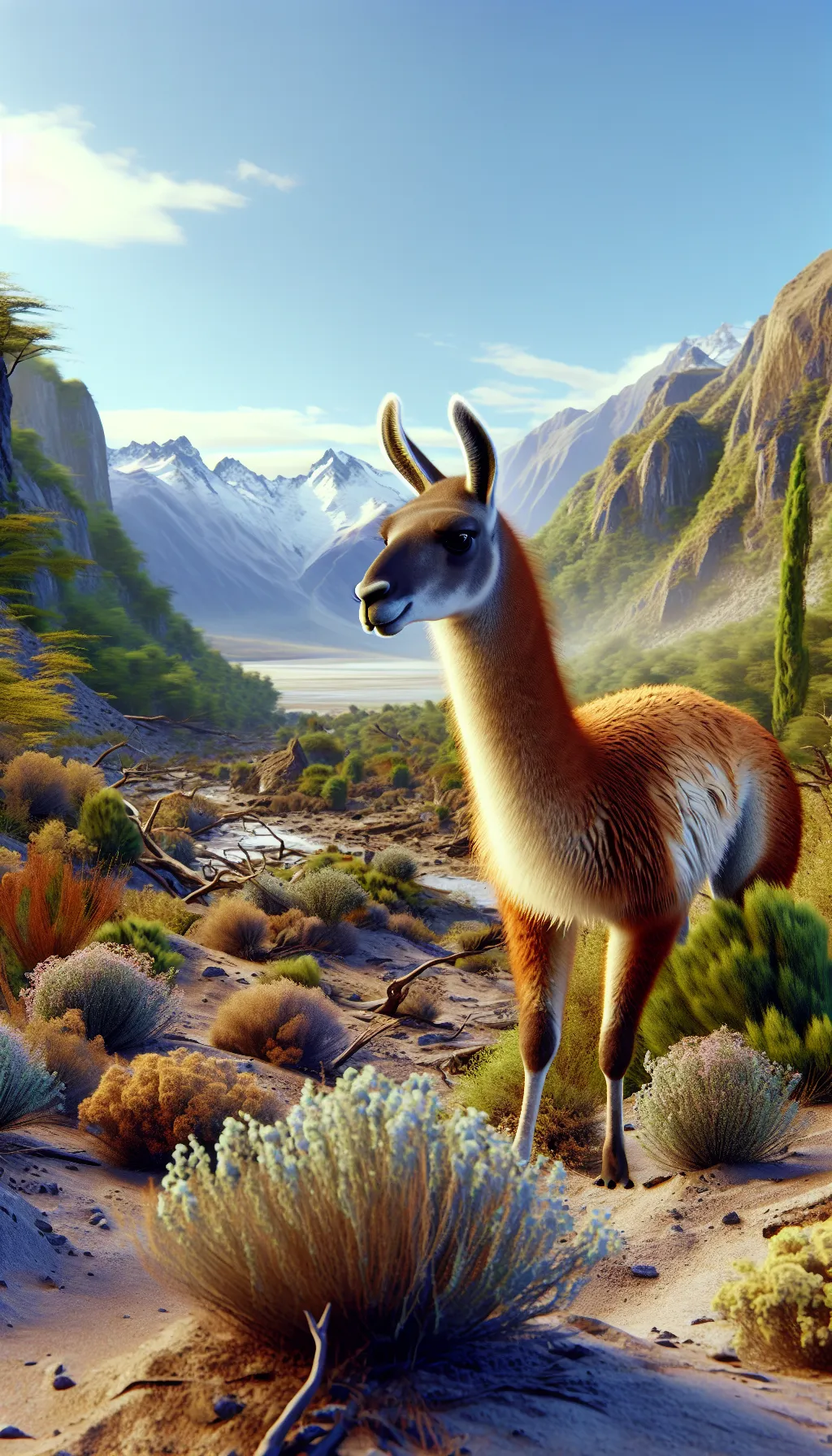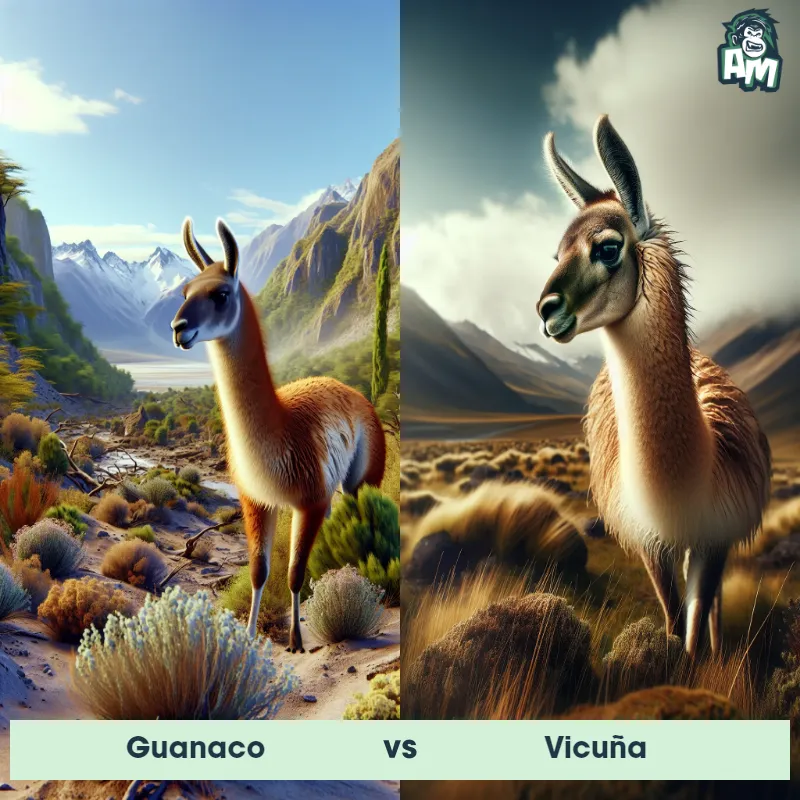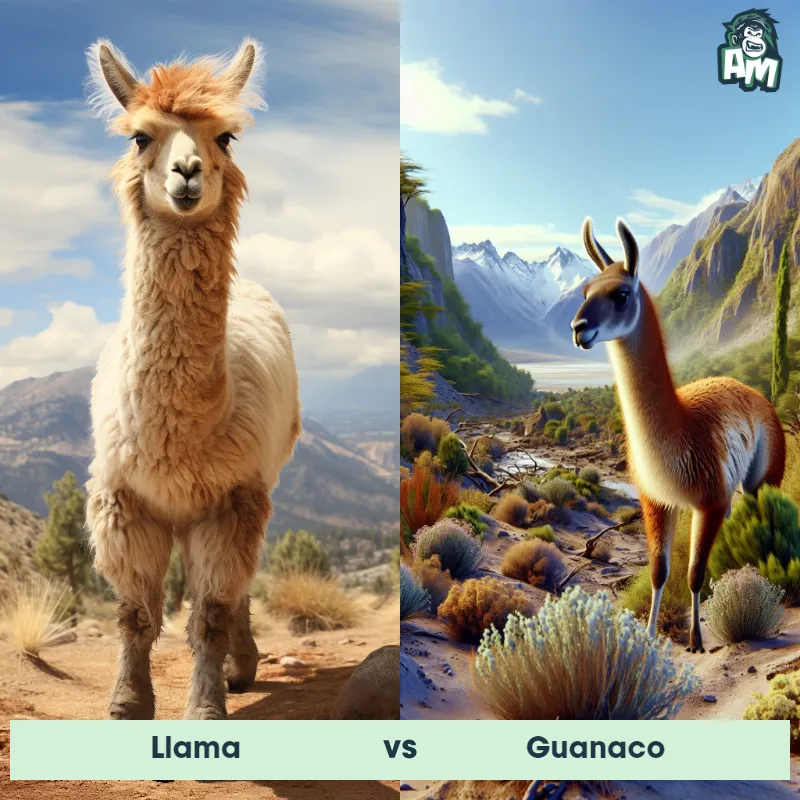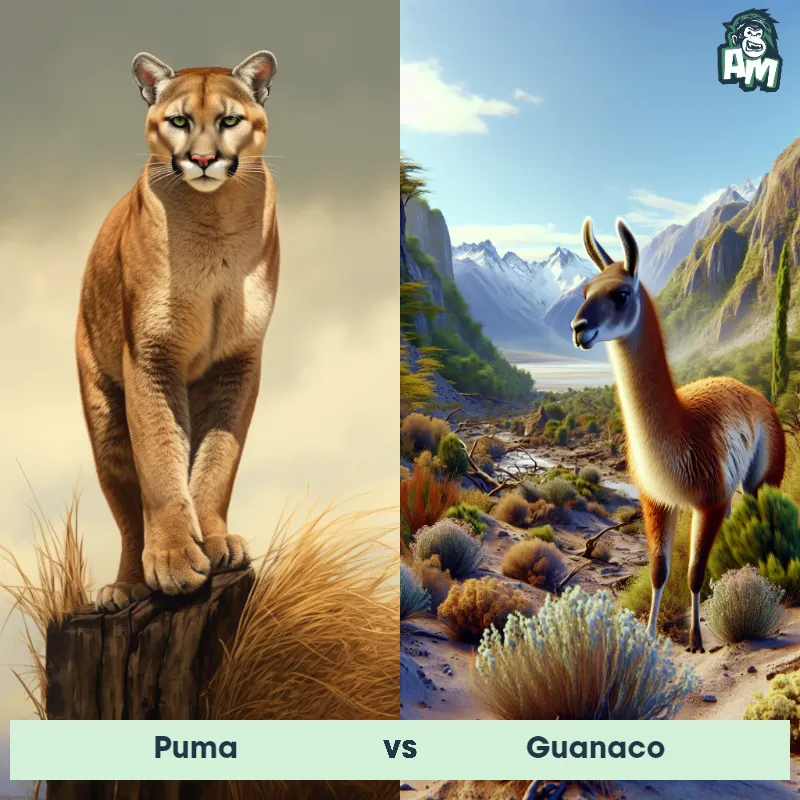The Guanaco
The Guanaco, scientifically known as Lama guanicoe, is a camelid native to the South American continent. These large herbivores are known for their slender build and long legs, allowing them to travel swiftly across rugged terrain. They have a brownish coat that provides excellent insulation during the harsh winters in their habitat. Guanacos have a distinguishable long neck, an elongated head with large eyes, and a tufted tail. They typically live in herds, grazing on grasses and plants, and are known for their alertness and agility.

| Guanaco | |
|---|---|
| Size | 3-4 feet tall at the shoulder (0.9-1.2 meters) |
| Weight | 200-300 pounds (90-135 kilograms) |
| Speed | 35mph (56km/h) |
| Key Strength | Agility and speed |
| Biggest Weakness | Lack of natural defensive weapons |
| Scientific Name | Lama guanicoe |
| Family | Camelidae |
| Habitat | Mountainous regions of South America |
| Geography | Argentina, Bolivia, Chile, Peru |
| Diet | Herbivorous, primarily grazing on grasses and other vegetation |
| Lifespan | 10 years - 15 years |

The Guanaco
The Guanaco, scientifically known as Lama guanicoe, is a camelid native to the South American continent. These large herbivores are known for their slender build and long legs, allowing them to travel swiftly across rugged terrain. They have a brownish coat that provides excellent insulation during the harsh winters in their habitat. Guanacos have a distinguishable long neck, an elongated head with large eyes, and a tufted tail. They typically live in herds, grazing on grasses and plants, and are known for their alertness and agility.
Fun Fact: Guanacos are exceptional swimmers and are often found crossing rivers or swimming across lakes in their natural habitat.
| Guanaco | |
|---|---|
| Size | 3-4 feet tall at the shoulder (0.9-1.2 meters) |
| Weight | 200-300 pounds (90-135 kilograms) |
| Speed | 35mph (56km/h) |
| Key Strength | Agility and speed |
| Biggest Weakness | Lack of natural defensive weapons |
| Scientific Name | Lama guanicoe |
| Family | Camelidae |
| Habitat | Mountainous regions of South America |
| Geography | Argentina, Bolivia, Chile, Peru |
| Diet | Herbivorous, primarily grazing on grasses and other vegetation |
| Lifespan | 10 years - 15 years |
Guanaco Matchups
We use AI to simulate matchups between the Guanaco and other animals. Our simulation considers size, strength, and natural predatory behaviors to determine the most likely outcome.

Can't find the Matchup you want?
Create Your Own MatchupGuanaco: Diet, Predators, Aggression, and Defensive Behaviors
What do Guanacos eat?
Guanacos are herbivores and primarily feed on grasses, shrubs, and other vegetation found in their natural habitat. They are well adapted to consuming tough, fibrous plants that other animals may not be able to digest.
Do Guanacos have any predators?
Yes, Guanacos have several natural predators in their habitat, including pumas, foxes, and wild dogs. These predators primarily target Guanaco young and vulnerable individuals, as healthy adult Guanacos are quite agile and can outrun most predators.
Are Guanacos aggressive?
Guanacos are generally peaceful animals and tend to avoid confrontation. However, during mating season or when protecting their territory, they may exhibit aggressive behavior towards other Guanacos.
Do Guanacos fight?
While Guanacos prefer to avoid physical confrontation, they can engage in fights with other individuals, especially during the mating season when males may compete for females. These fights typically involve vocalizations, posturing, and sometimes physical contact such as kicking or neck-wrestling.
How do Guanacos defend themselves?
When threatened, Guanacos can defend themselves through various means. They may use their speed and agility to outrun predators, or they may spit, kick, or use their sharp hooves to ward off attackers. Guanacos may also vocalize loudly to alert nearby herdmates of danger.
What is the biggest weakness of Guanacos in a fight?
Despite their speed and agility, Guanacos can be vulnerable during close-quarters combat due to their relatively slender build and lack of strong defensive structures like horns or antlers. In a fight, a Guanaco's best defense is often to escape rather than engage in prolonged physical combat.
Fun Fact: These fascinating animals have incredibly powerful legs and can reach speeds of up to 35 miles per hour 56 kilometers per hour when running, making them one of the fastest land animals in South America.
Fun Fact: Guanacos have the ability to spit as a defense mechanism when they feel threatened or as a way to establish dominance within their herd. The projectile spit can reach distances of up to six feet 1.8 meters and is often directed at perceived threats like predators or rival males.













